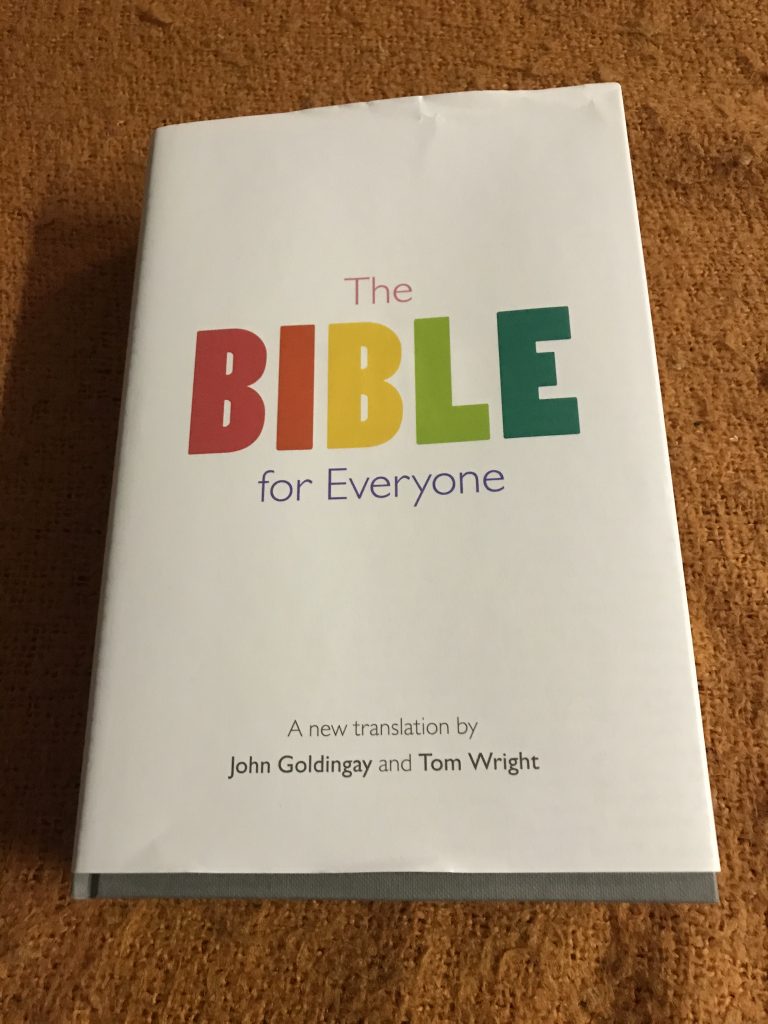
On this side of the Atlantic, there has been very little talk about the 2018 publication of The Bible for Everyone. Only available through SPCK in the UK, it is the combined work of two eminent biblical scholars, John Goldingay and Tom (NT) Wright. The Bible for Everyone combines the 2011 Tom Wright translation of the New Testament, known in the US as the Kingdom New Testament and in the UK as The New Testament for Everyone, with John Goldingay’s 2018 translation of the Hebrew (39 Books) Old Testament, known as The First Testament. As I was in the market for a second bible to complement my daily reading (lectio), I became intrigued by this one.
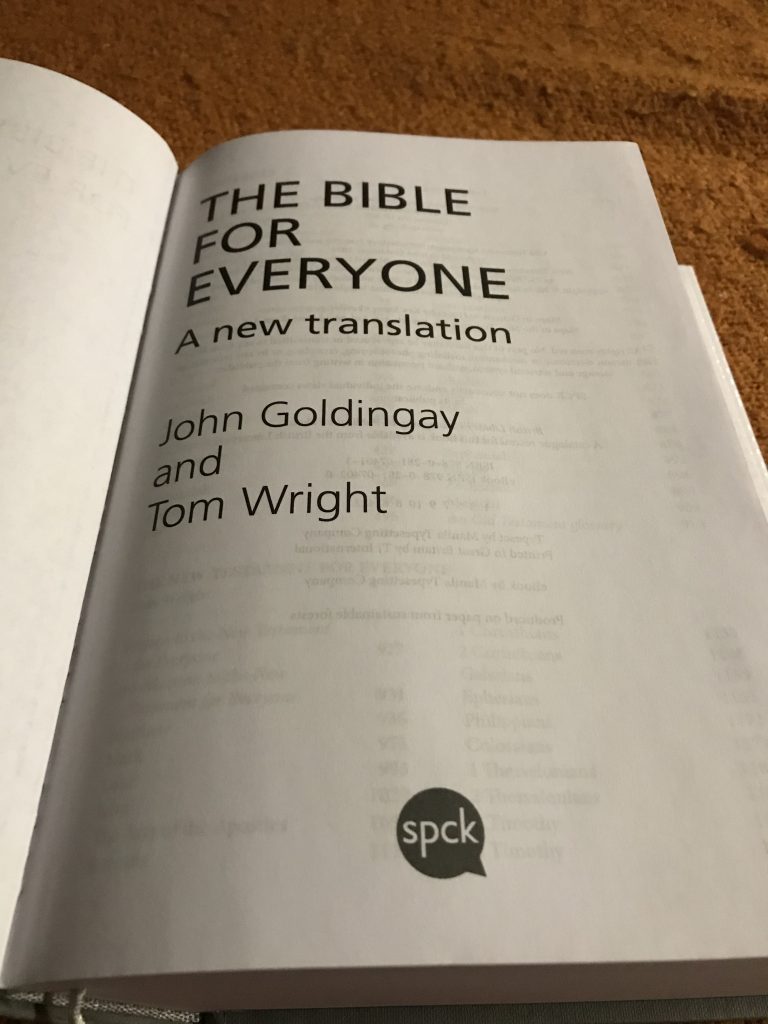
Publisher’s description:
The Bible for Everyone is the result of a passionate conviction that scripture should be something that everyone can read, understand and enjoy. Two world-renowned biblical scholars and communicators have therefore undertaken a tremendous task: to draw together, revise and supplement the translations that appear in their popular For Everyone commentaries, making a rounded, readable and reliable version of the Bible that will prove helpful to people of all religious backgrounds at every stage of their lives.
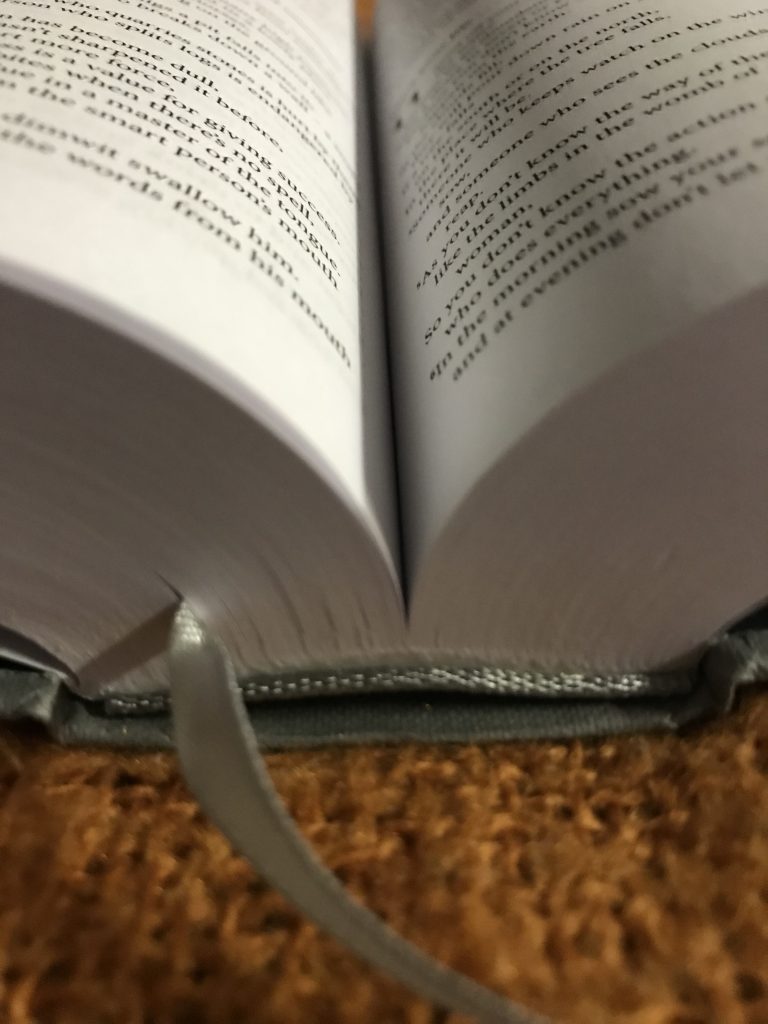
It is difficult to say where along the spectrum these translations fit. In some places they are very literal, while in others they tend to be a bit more dynamic. (Of course, most translations are seeking a balance between being accurate and understandable to the modern reader.) What makes this translation unique is that there are two different styles, due to the two different translators. I remember listening to (or perhaps reading) something that Msgr. Knox once said regarding his translation of the Bible. He was giving advice to a future translator of the Bible and recommended that the two Testaments should have a different feel to them. He thought the Old Testament should sound as if it were from an earlier age, while the New Testament, written in the common Koine Greek of the day, should sound more modern. I think the translators do a very good job doing this, although clearly this was not intentional since seven years separate their respective publications. For more on the style of these two translations, I recommend the reviews on Scot McKnight’s blog The Jesus Creed for more on its style:
Jesus Creed: The First Testament
Jesus Creed: The Kingdom New Testament
(It is interesting to note that McKnight is currently working on his own translation of the New Testament, which will eventually be paired with the Goldingay OT for publication in the US.)
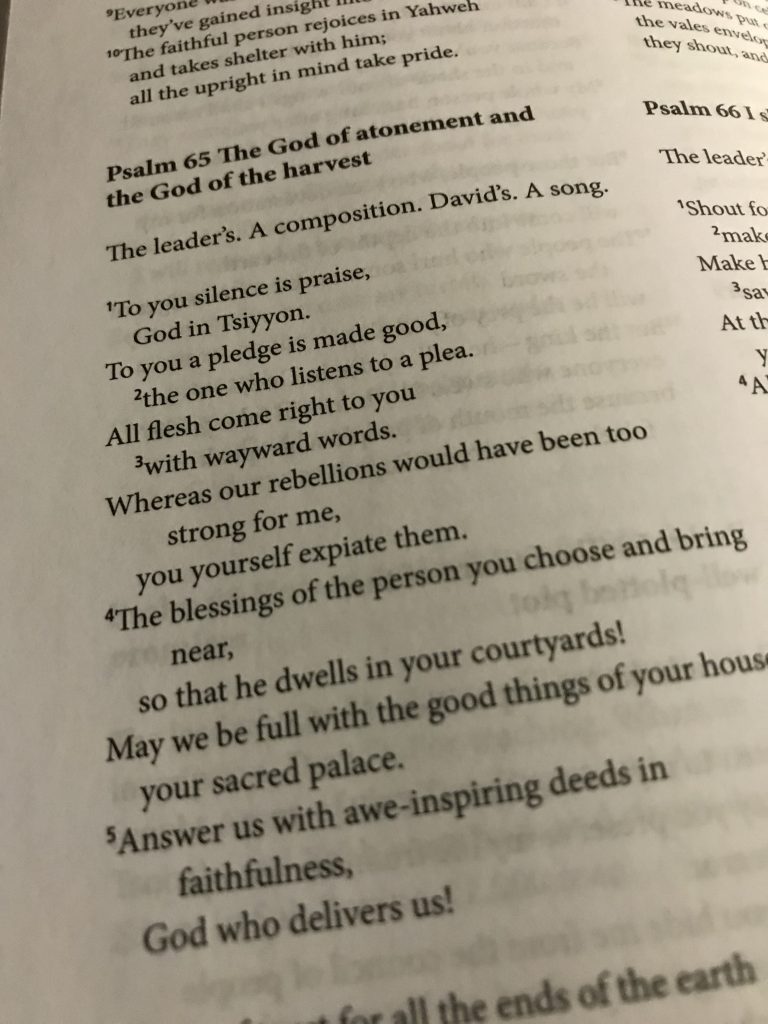
During my search, one of the bibles I was comparing The Bible for Everyone with was the Revised New Jerusalem Bible. I had a copy of the NT and Psalms for the RNJB, but ultimately decided not to get the full edition. Some of the reasons are due to the translation style of the RNJB, which I think makes a mistake in attempted to be a formal translation, although I understand why that was attempted. One of the other reasons that turned me off was the quality of the book itself. Having held a copy of the massive US edition of the RNJB, I was shocked to see it not being a sewn edition. Clearly it was glued. On the other hand, the hardcover The Bible for Everyone is sewn and comes with a ribbon marker. The paper is thicker than the typical, super-thin paper we have seen with a number of recent bibles, and it is very good to read from and feels quite sturdy. It was clearly created to last. While it doesn’t have references or annotations, the type-setting is very clear, with plenty of space for annotations and reflections. This bible is also line-matched.
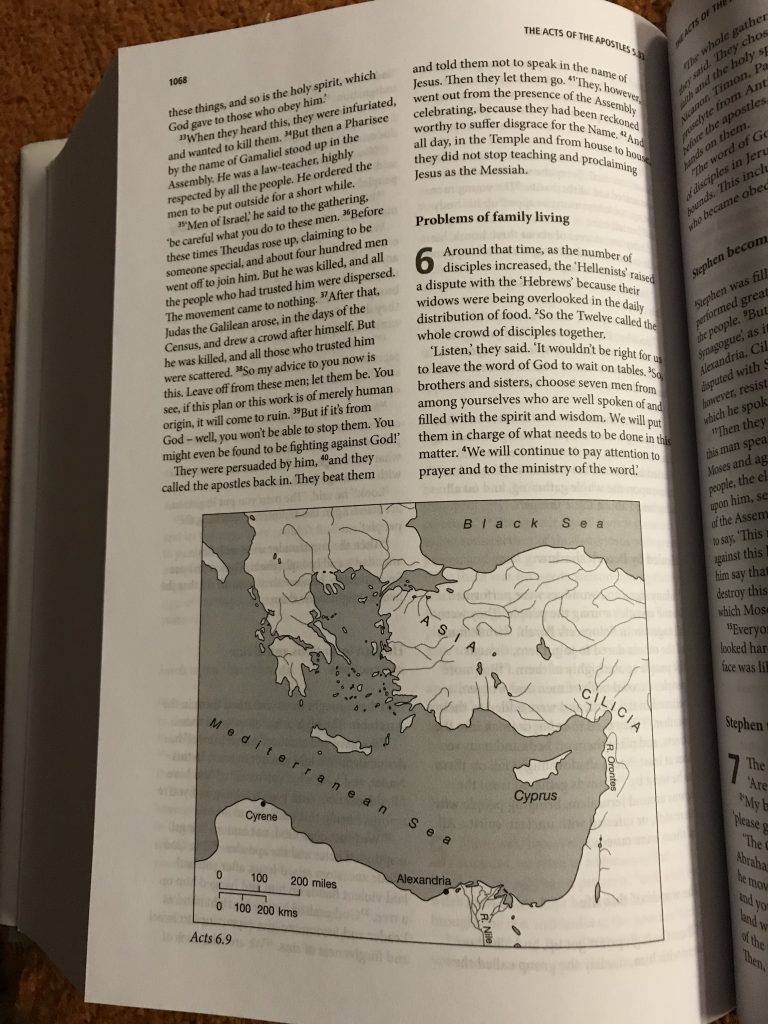
Along with the text, which does not include the Deuterocanonical books, there are brand new introductions for each of the biblical books, done my the translators. Each Testament comes with its own introduction as well. There are plenty of in-text maps scattered throughout the volume, found at their appropriate places. (There are somewhere around 66 of them in total.) Also included are glossaries for both the Old and New Testaments, again written by the translators. These have already proven to be a great help, with some of the entries being pretty substantial in size and content.
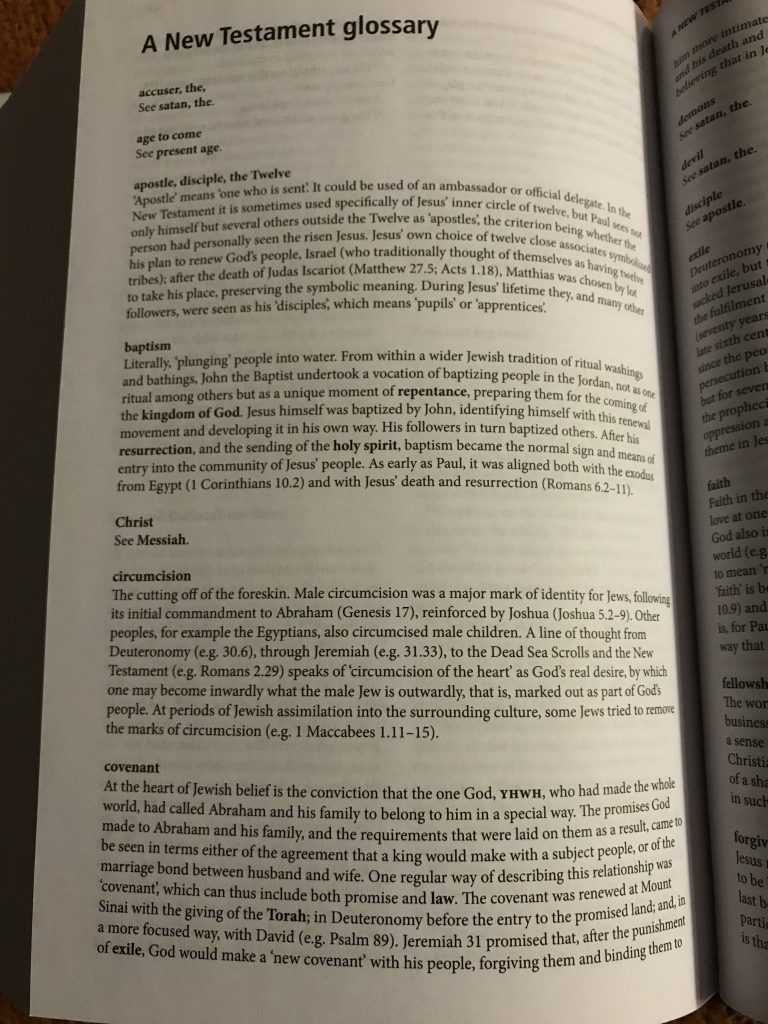
So, will The Bible for Everyone appeal to the typical Catholic bible reader? I am not sure. Personally, I have enjoyed what I have read so far. Goldingay’s decision to transliterate many of the well-known Hebrew names and places makes reading his Old Testament feel very intimate and more personal. Wright’s New Testament is more of a known quantity to me, so I haven’t been all that surprised with it. I enjoy Wright’s work, so his NT has always appealed to me. I plan on using this extensively in the new year. I was able to get this edition via Amazon for right around $30. It is also available at Book Depository. It took about two weeks to arrive, but considering how expensive some more recent Catholic editions have been costing, I consider it a steal. A blessed Advent and Christmas season to you all.
Thanks for the review!
It seems like there are a lot of translations coming out these days outside of what’s left of the Mainline Protestant industrial complex. By that I mean in some cases non committee translations that are coming toward the a motive that isn’t just “great for study and able to be read in Churches”.
I’ve been reading a lot from David Bentley Hart’s translation New Testament with great interest lately. It seems to be the exact opposite of this translation: A translation to give an impression of the power and strangeness of the NT text. In his words it is “pitilessly literal” but also stubbornly refuses to follow the path marked off by the tradition of biblical translation in English. Curiously, he says in his long introduction how he prefers translations made by individuals for the way they avoid groupthink. (I’m paraphrasing).
Viewing things from a business standpoint, these translations by individuals don’t require the budget of, say, a NRSV, and so could be a “success” with far fewer sales.
Bob,
Over the years, I have found myself attracted more and more to those translations that are done by a single individual (or perhaps two) in contrast to the typical committee approach. Not saying that the committee approach is inferior, far from it. However, the works of people like Knox, Peterson, Alter, Wright, Goldingay, and Hart (among others) have been a great benefit to my understanding (and praying with) the scriptures.
Interesting review by N.T. Wright on Hart’s translation (which I own and haven’t used much yet, but want to get into): https://www.christiancentury.org/review/books/new-testament-strange-words-david-bentley-hart
I’m looking forward to reading Wright’s translation in The Bible for Everyone edition, too. I’ve enjoyed Wright’s insights.
If anyone is interested in checking out Wright’s Kingdom New Testament before purchasing The Bible for Everyone, the New Testament is accessible on biblegateway.
That review you linked created quite the tempest in a teapot when it happened. Hart strenuously disagreed and the two had quite the online tussle. I remember mentally siding with Hart after reading the broadsides, but at this point can’t really remember why.
I know Hart’s work received some very good endorsements. On the other hand, I became familiar with N.T. Wright’s work through Bishop Robert Barron. Personally, I like to “hear” the different nuances in the text from various scholars’ translations, whether it’s either of theirs or the NABRE, NRSV, NJB,(&revised edition), RSVCE2, the newly released New Catholic Bible (NCB), etc. A good resource is the newest edition of the NET Bible, which has extensive footnotes indicating scholars’ choices and the underlying Hebrew and Greek, etc.
I don’t believe it’s a bad thing to have a few different translations on hand, even if one has a preferred go-to. My go-to tends to be the RSV-CE 2nd edition, though it certainly has its own weaknesses, as well.
It seems to me that there are translations more conducive to personal devotion, and others for in-depth study. I expect The Bible for Everyone to be more suited for the former purpose.
I’m going to say something that is likely to be unpopular, or at least counter-cultural at a blog like this, but it is something that I think we all know deep down: there are too many Bible translations.
I personally own, I don’t know, 50, maybe more, different translations of the Bible, and if you count translations of at least part of the Bible, that number would probably be at least double. I own everything from the Wycliffe translations of the Vulgate in the 15th century, to the RNJB and everything in between. If you think of a translation, the odds are better than even that I have a copy of it. The Tyndale translation? Check. The Geneva Bible? Check. The Douay Rheims? Check. The JB Phillips translation of the NT? I own three different editions. The RSV? I own the original 1952, the 1966 Catholic Edition, the 1973 Ecumenical Edition, and the 2006 second Catholic Edition. I own more Bible than any sane human being ought to.
I’m no expert, and I can’t claim to have actually read all these translations, I own more than any one human being could read in one lifetime, but I have read enough to be able to draw some conclusions.
Most Bible translations are the same at least 85-90% of the time. It doesn’t matter what your translation philosophy might be, at the end of the day, 90% of the time, there is really only one way to express a certain thought in English, the only difference is the exact wording.
And where translations differ, the ones that are radically different, are, by and large, really, really bad. And they aren’t just bad, but they tend to be incredibly biased. And the translations done by a single individual are the worst offenders.
There is one translation that is downright legendary for its badness, and that is the translation by James Moffat (NT 1913, full Bible 1926), this version is perhaps best known for being used for decades by the Jehovah’s Witnesses due to its downright bizarre translation of John 1:1: ‘the word was with God, the word was a god’, other bad translations in this version are the words of institution ‘take, eat, this means my body’, interestingly enough, Moffat was a member of the team that produced the 1952 RSV, which is far more traditional in its rendering of the text.
The lesson: translations done by a committee, especially by an ecumenical committee that has Catholics, Protestants, and Orthodox, tend to be better because the committee prevents any one person from inserting his bias, or personal theories.
My point? NT Wright’s NT translation is almost as bad as Moffat’s and in the same way. If you know Wright’s views, then you know he has a lot of very controversial opinions. And, sadly, like most translations that are done by a single individual, he tries desperately to shoehorn his pet theories into his translation through a lot of weird choices.
Buyer beware.
Which is best non modernistic translation in modern English of the Bible?
I like the Douay–Rheims, but I am looking for a formal equivalence translation from Hebrew and Greek.
I don’t know what you mean by non-modernistic, but in my private reading I usually go for either the NABRE (which is s much better translation than done people make it out to be) or the ESV.
Biblical Catholic,
I agree with you regarding the NABRE. It has lately, and somewhat surprisingly, become my preferred translation. However, I am mostly displeased with most available editions. Is there a particular edition you recommend?
Thanks!
KJ,
I can’t be specific, but I know that there will be some new quality editions of the NABRE available in the new year.
Timothy,
Please share what info you know about “quality editions”…
Timothy,
I’m very happy to hear that. Do you know who will be putting them out?
Thanks!
My problem with quality editions of the NABRE is that I just can’t bring myself to buy any knowing that the translation is already being revised again. I know that if I buy something now, I won’t want it anymore in 6 years.
100% agree with that comment.
KJ and Michael,
I am not able to say much more than what I wrote, sorry. I will add that it is a major publisher and publication would be in late summer.
Timothy,
Well, I certainly look forward to that!
I already have way too many copies of the NABRE I definitely won’t be buying another one until the new revised New Testament comes out.